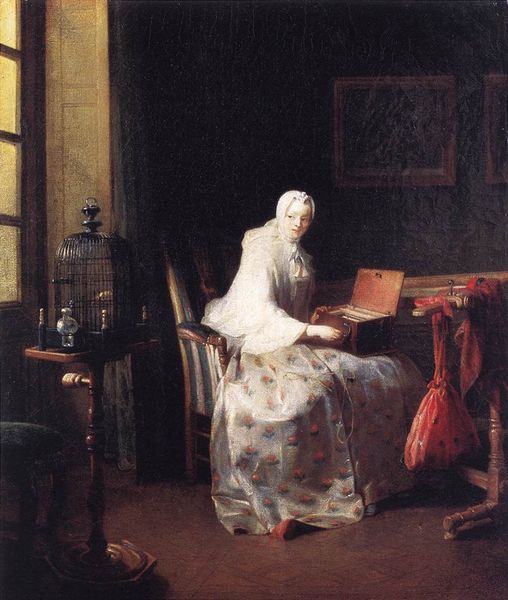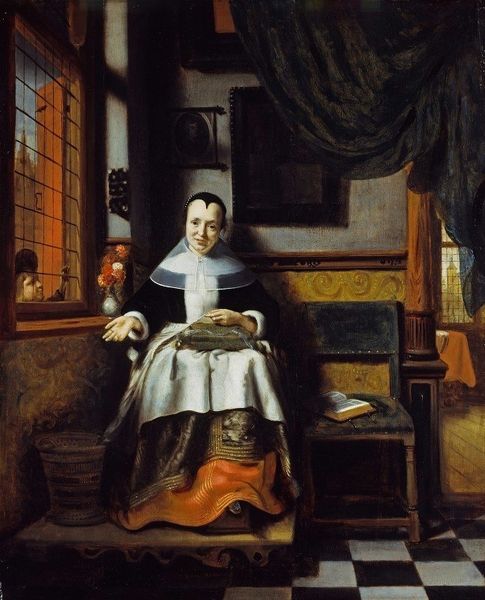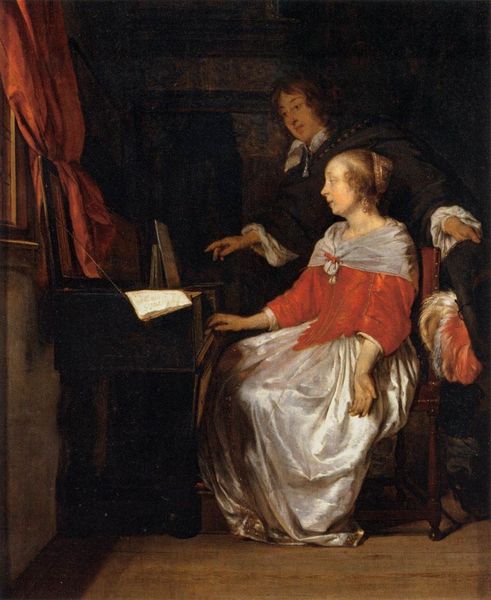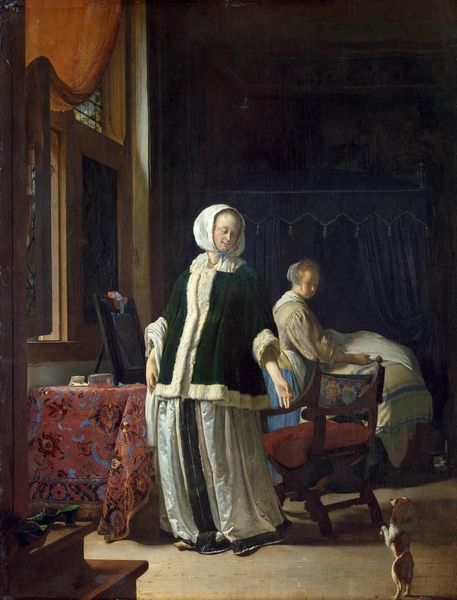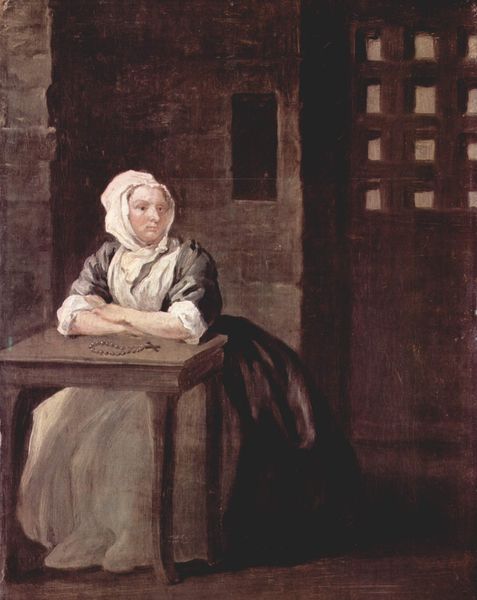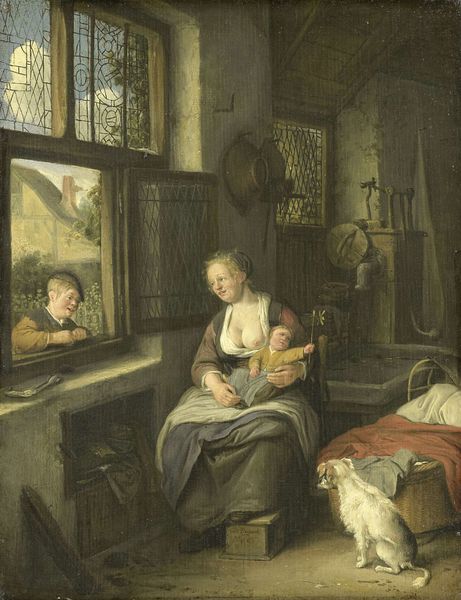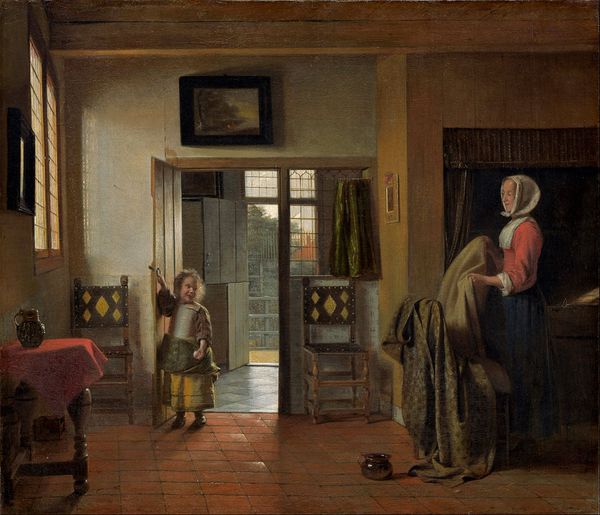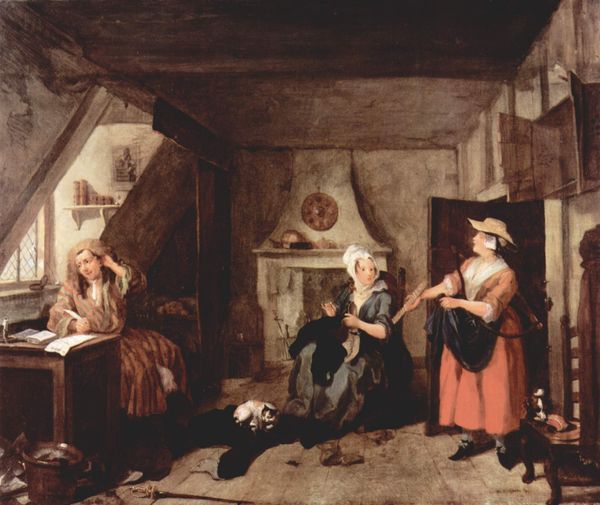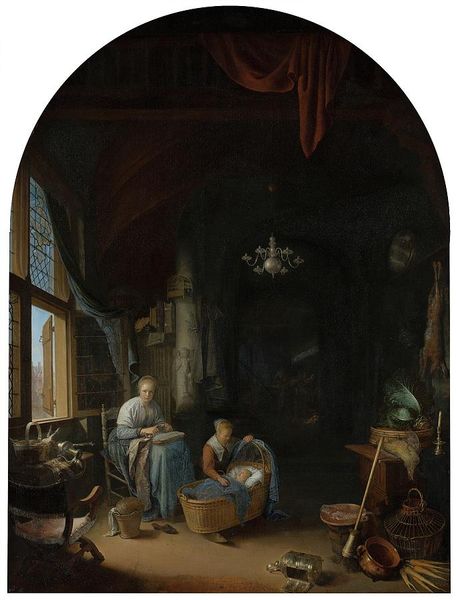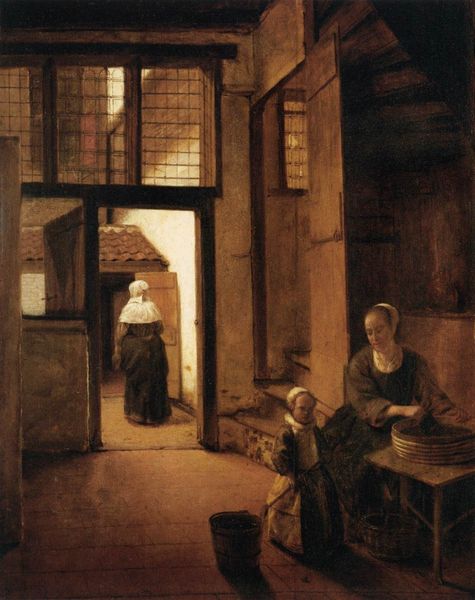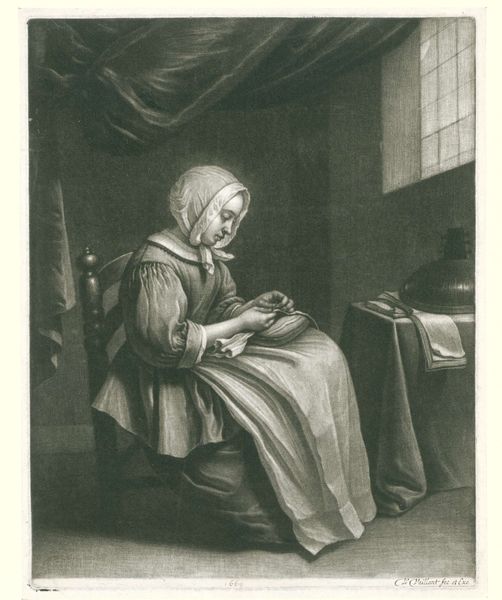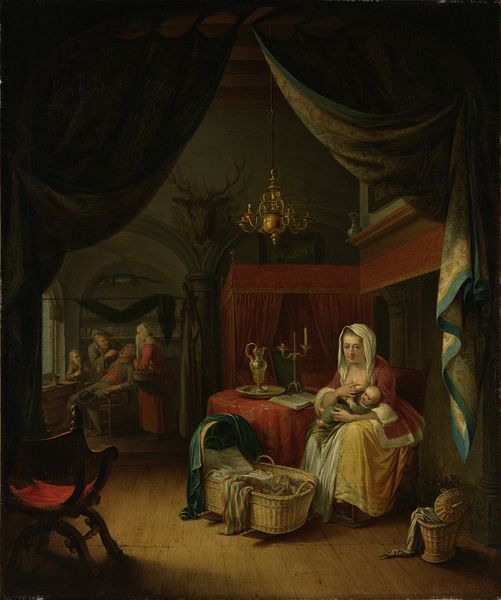
oil-paint
#
portrait
#
baroque
#
dutch-golden-age
#
oil-paint
#
oil painting
#
genre-painting
Dimensions: 37.7 x 29.8 cm
Copyright: Public domain
Curator: This is Gerrit Dou’s, A Lady Playing the Clavichord, dating from around 1665. It is part of the collection at Dulwich Picture Gallery. Editor: It strikes me as a picture of restrained opulence; the subdued lighting, the solitary figure… it evokes a sense of quiet contemplation. Curator: Indeed. Dou, a key figure of the Dutch Golden Age, here expertly uses oil paint to depict not only the scene but also a sense of bourgeois life and domesticity. Notice how the cool light floods through the window. Editor: That light definitely plays a key role! The lady illuminated is positioned at the clavichord, while around her we see various symbols of refined existence. The carpet, draped extravagantly, for example... how does that function? Curator: It adds another texture. Also, this is Dou demonstrating his talents in portraying fabrics – and wealth! He meticulously detailed these scenes with tangible materials like instruments, tapestries, and rich garments, which elevated genre paintings for a prosperous merchant class and their aspirations. Editor: But consider also the musical instruments. A cello leans against the table, alongside the clavichord; and an open songbook and, what I take to be, a glass of wine? All evoke harmony and refinement, creating a narrative about idealized femininity and leisure, but the real story is that this painting became quite famous. Did this have something to do with its dimensions or medium, perhaps? Curator: Yes, it is typical of Dou's smaller scale. The use of oil paints allowed this fine level of detail – perfect for intimate interiors! Moreover, it reflected consumer aspirations during the Dutch Golden Age. Editor: So, the meticulous depiction reflects a broader cultural preoccupation with social standing through materialism... Fascinating how these visual elements accumulate symbolic meanings beyond their literal presence. Curator: Precisely! And that is why an understanding of Dou’s workshop practices and the wider artistic market enables us to grasp how this era embraced prosperity, artistic talent and craftsmanship. Editor: Indeed, now when I consider the imagery—the musical instruments and the lighting and the rich ornamentation—I discern an artistic and, importantly, historical narrative far more compelling than my initial impression of just mere domesticity. Curator: Precisely! The canvas shows material wealth interwoven with craft to produce fine art for affluent homes in a booming, optimistic 17th century society.
Comments
No comments
Be the first to comment and join the conversation on the ultimate creative platform.
